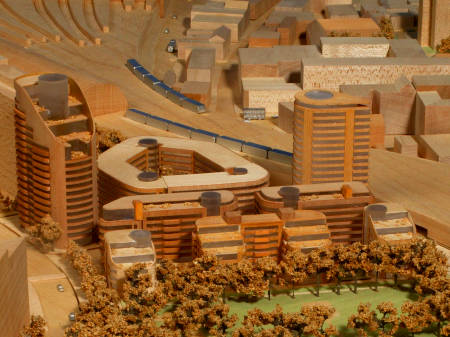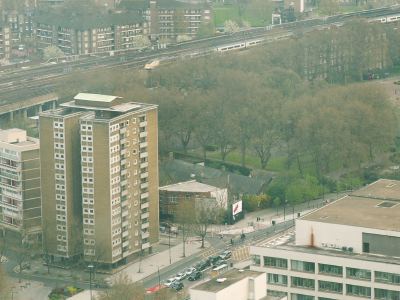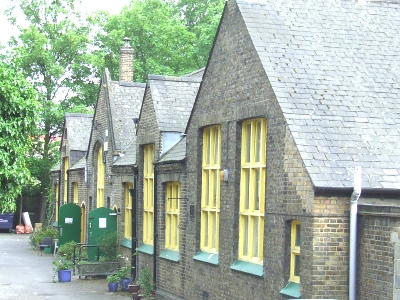Founder’s Place wins go-ahead from Hazel Blears
The controversial Founder's Place development near St Thomas' Hospital has been granted planning permission on appeal by communities secretary Hazel Blears.



The decision follows a public inquiry held at Lambeth Town Hall in April and May into plans for redevelopment of land either side of Royal Street including Canterbury House and Stangate to the north and the Holy Trinity Centre to the South.
The scheme – which comprises eight buildings ranging in height from five to 20 storeys – put forward by Guy's and St Thomas' Charity had been rejected by Lambeth Council's planning committee in April 2006. Their decision has now been overturned by Ms Blears.
"It has been a long and arduous process, but we are very pleased that our vision for Founder's Place will finally become a reality," says Geoff Shepherd, chief executive of Guy's and St Thomas' Charity.
"There is no doubt that it will be of great benefit to the local health service, as well as provide much needed regeneration of the local area."
Several elements of the scheme had proved controversial, including the loss of the Holy Trinity Centre, a Victorian building that formerly housed Holy Trinity School and which is now used by the Kagyu Samye Dzong Tibetan Buddhist centre.
The centre lies within the Lambeth Palace Conservation Area, but it is not listed. An attempt by Kate Hoey MP to have the former school building listed was unsuccessful.
In her evidence to the planning inquiry, Kate Hoey described the Holy Trinity Centre – which dates from 1847 – as "one of the last bits of working-class history in the area". She accused the Charity of a "sham" consultation with local residents and of trading on its association with the hospital to win backing for a "grossly over-dense" development: "If this had been a private developer, attitudes would have changed".
The minister's decision letter makes it clear that she "considers that there are shortcomings in the appellant's justification for the demolition of the Holy Trinity Centre," but this criticism is outweighed by the scheme's other merits.
Ms Blears also rules that "the proposed development would not detract from Archbishop's Park's essentially open character or pleasing appearance. Like the Inspector, she is satisfied that a row of Plane trees growing close to the northern boundary of the park could be safeguarded by measures which could be secured by planning conditions."
The development has been designed by Sir Terry Farrell and will provide accommodation for 400 staff at SE1's two NHS hospitals. The long-term tenants of Canterbury House and Stangate will be rehoused in the new development.
More than 300 private flats will help to fund the health-related elements of the scheme.
Other elements of the development include a nursery for the children of hospital staff, the relocation of Ronald McDonald House, a hostel for families of sick children undergoing treatment at the new Evelina Children's Hospital.
A patient hotel for patients who need to be close to the hospital but do not require a hospital bed is also planned.
Sir Terry Farrell welcomed Ms Blears' decision: "This is a tremendous opportunity to contribute to Lambeth's regeneration, with the creation of a new urban quarter for the well-being of staff, patients and their families at Guy's and St Thomas' NHS Foundation Trust.
"I also believe that we will enhance the environment for the wider district as this is a model mixed-use scheme, with much needed social and private housing alongside a variety of medical and community facilities."
The decision to approve the scheme was criticised by Green Party London Assembly member Jenny Jones. "It is a great shame that yet again the Secretary of State has ridden rough-shod over the considered decision of local representatives about a development in this area," she said.
"There was no opposition to this development in principle, indeed, even if the claims on its behalf are over-exaggerated, it provides much-needed facilities and housing.
"Objections to the plans were about minimising any negative impact it had on the area. The planning committee gave very reasonable reasons for rejecting the scheme and it would have been better for everyone if these had been addressed through modifications to the design rather than appealing the decision.
"Unfortunately the track record of the scheme's proposers meant that it was highly unlikely they would take such a constructive approach.
"The long and arduous process in approving the development was, in my opinion, directly related to the approach the Charity took to dealing with the parties affected by their plans."
The Charity will now be seeking a development partner to manage the construction phase. It is envisaged that demolition of the Holy Trinity Centre will begin early in 2008 and that building work will commence later that year.
Construction will be phased so that the tenants of Canterbury House and Stangate can move into their new homes by spring 2009 and the Ronald McDonald House can move to the site as soon as possible.
Comments
Share
The SE1 website is supported by people like you
More to read
- Duchess of Cambridge to be patron of Evelina Children's Hospital 11 Dec 2018
- Duchess of Cambridge opens Lambeth's new Ronald McDonald House 28 Feb 2017
- Duchess of Cambridge to visit Ronald McDonald House 20 Feb 2017
- Jeff Brazier breaks ground at new Ronald McDonald House 11 Jun 2015
- Southwark Civic Awards: record number of locals honoured 20 May 2015
- Ronald McDonald House gets green light in Lambeth Road 1 Dec 2014
- New Ronald McDonald House planned for site next to Lambeth Palace 17 Jun 2014
- Southwark Civic Awards for volunteers, MPs, war hero and actor 12 May 2012
- Founder's Place development cancelled by Guy's and St Thomas' 17 Jun 2010
- Pop Life: Art in a Material World at Tate Modern 30 Sep 2009
Related forum discussions
- McDonald's at Guy's Hospital
- Destroying the character of Bermondsey Street
- Lying In Hospital - For Sale
- Founder's Place development - planning appeal
- Founders Place Development - Appeal
- Save some trees: New Planning Application
- Help: New development disaster
- Founders Place Planning Committee Site Visit
Follow us
Email newsletter
For the latest local news and events direct to your inbox every Monday, you need our weekly email newsletter SE1 Direct.

